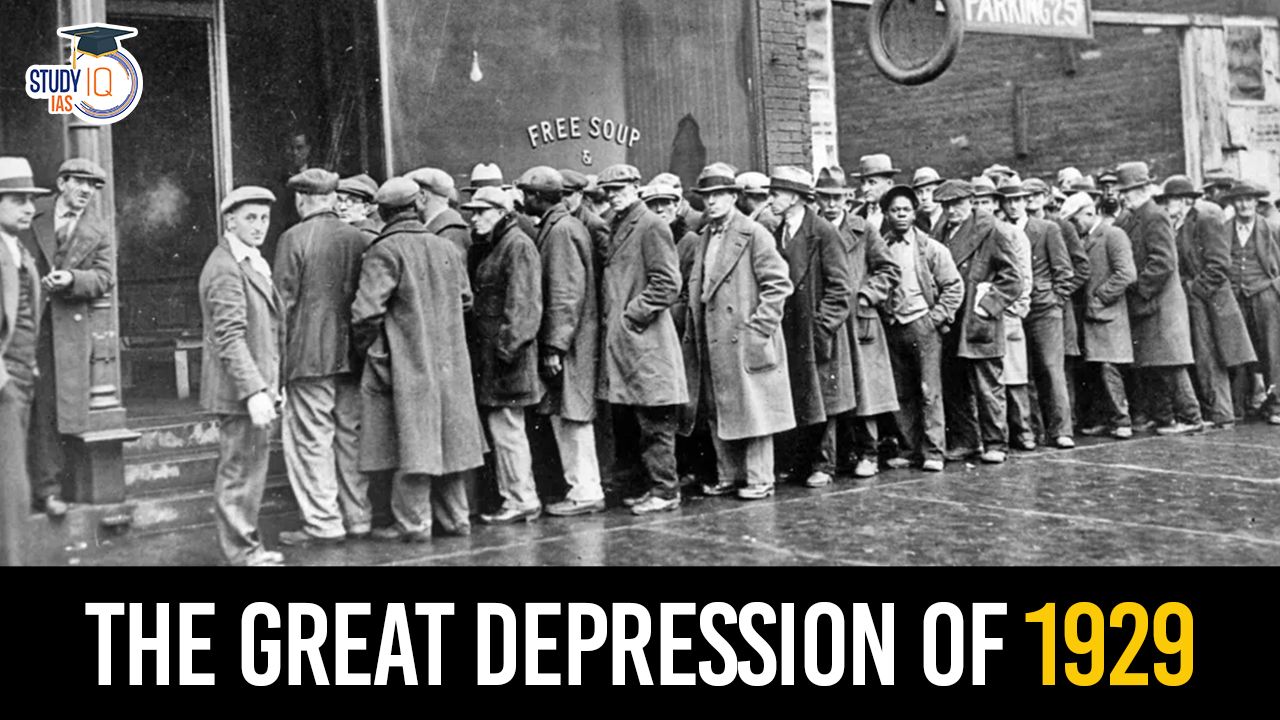Table of Contents
The Great Depression of 1929
The Great Depression of 1929 stands as one of the most significant economic downturns in modern history, profoundly impacting the global economy and reshaping socio-political landscapes. Beginning with the stock market crash of October 29, 1929, known as Black Tuesday, the Depression lasted for over a decade, fundamentally altering the lives of millions worldwide. This article delves into the causes, effects, and responses to this catastrophic event that reverberated throughout the 20th century.
Great Depression 1929 Overview
| Aspect | Description |
| Time Period | 1929-1941 (with the most severe economic downturn occurring from 1929 to the late 1930s) |
| Causes | Stock market crash, overproduction, excessive borrowing, banking crisis, agricultural downturn |
| Stock Market Crash | Black Tuesday (October 29, 1929) – Dow Jones Industrial Average plummeted, leading to panic selling |
| Unemployment | Peaked at around 25% in the United States |
| Banking Crisis | Widespread bank failures leading to loss of savings for millions of people |
| International Impact | Global economic downturn, affecting Europe and other parts of the world |
| Government Response | Initially limited intervention, later extensive public works programs (New Deal) |
| Social Impact | Poverty, homelessness, breadlines, Dust Bowl migration in the United States |
| Economic Recovery | Slow and gradual, accelerated by World War II |
We’re now on WhatsApp. Click to Join
Causes of the Great Depression
- Stock Market Speculation: In the 1920s, stock prices soared, fueled by speculative investments and easy credit. Investors engaged in risky practices, buying stocks on margin, essentially borrowing money to invest. This speculative bubble created an unsustainable market.
- Overproduction and Underconsumption: Industries expanded rapidly during the 1920s, leading to overproduction of goods. However, wages did not keep pace with the growth of productivity, leading to a gap between the production capacity and consumer purchasing power.
- Agricultural Crisis: Farmers faced severe challenges during the 1920s, including falling agricultural prices, drought, and the loss of fertile land due to overproduction. The agricultural sector, a cornerstone of the American economy, suffered immensely, exacerbating economic woes.
- Bank Failures: The banking system was fragile and unregulated, leading to rampant speculation and risky investments. When the stock market crashed, banks faced massive withdrawals as panicked depositors sought to withdraw their funds. Many banks failed, further exacerbating the crisis.
- Smoot-Hawley Tariff Act: In an attempt to protect American industries, the U.S. government passed the Smoot-Hawley Tariff Act in 1930, imposing high tariffs on imported goods. This move sparked retaliation from other countries, leading to a collapse in international trade and exacerbating the global economic downturn.
Effects of the Great Depression
- Unemployment: Unemployment rates soared during the Great Depression, reaching unprecedented levels. By 1933, approximately 25% of the American workforce was unemployed, and millions more suffered underemployment.
- Poverty and Homelessness: Poverty became widespread, as families lost their homes and livelihoods. Shantytowns, known as “Hoovervilles,” sprung up across the country, housing the displaced and destitute.
- Decline in GDP: The Depression saw a sharp decline in economic activity, with GDP plummeting by over 30% between 1929 and 1933. Industrial production fell, businesses shuttered, and consumer spending dwindled.
- Social Unrest: The economic hardships of the Depression led to social unrest and political radicalization. Protests, strikes, and riots erupted as people demanded relief from the government and economic justice.
- Global Impact: The Great Depression had far-reaching consequences beyond the United States, triggering economic crises worldwide. Countries reliant on exports suffered immensely, and international trade contracted sharply.
Government Response and Recovery Efforts
- New Deal: President Franklin D. Roosevelt implemented the New Deal, a series of programs and reforms aimed at providing relief, recovery, and reform. Key initiatives included the establishment of social security, the creation of jobs through public works projects, and financial regulation.
- Monetary Policy: The Federal Reserve implemented expansionary monetary policy, lowering interest rates and increasing the money supply to stimulate economic activity.
- Public Works Projects: The government launched large-scale public works projects, such as the construction of roads, bridges, and dams, to create jobs and stimulate economic growth.
- Social Welfare Programs: The New Deal introduced social welfare programs, including unemployment insurance and assistance for the elderly and needy, to provide relief to those hardest hit by the Depression.
- World War II: The onset of World War II in 1939 ultimately brought an end to the Great Depression, as increased government spending on defense production spurred economic growth and reduced unemployment.
Great Depression UPSC
The Great Depression of 1929 remains a seminal event in global economic history, highlighting the dangers of speculative bubbles, income inequality, and inadequate regulation. Its profound impact reshaped economic policies, social institutions, and political landscapes for decades to come, serving as a stark reminder of the importance of proactive government intervention during times of crisis.


 Creative Economy in India, Current Situa...
Creative Economy in India, Current Situa...
 Food Adulteration in India: Definition, ...
Food Adulteration in India: Definition, ...
 Sunrise Sectors in India, Key Characteri...
Sunrise Sectors in India, Key Characteri...





















